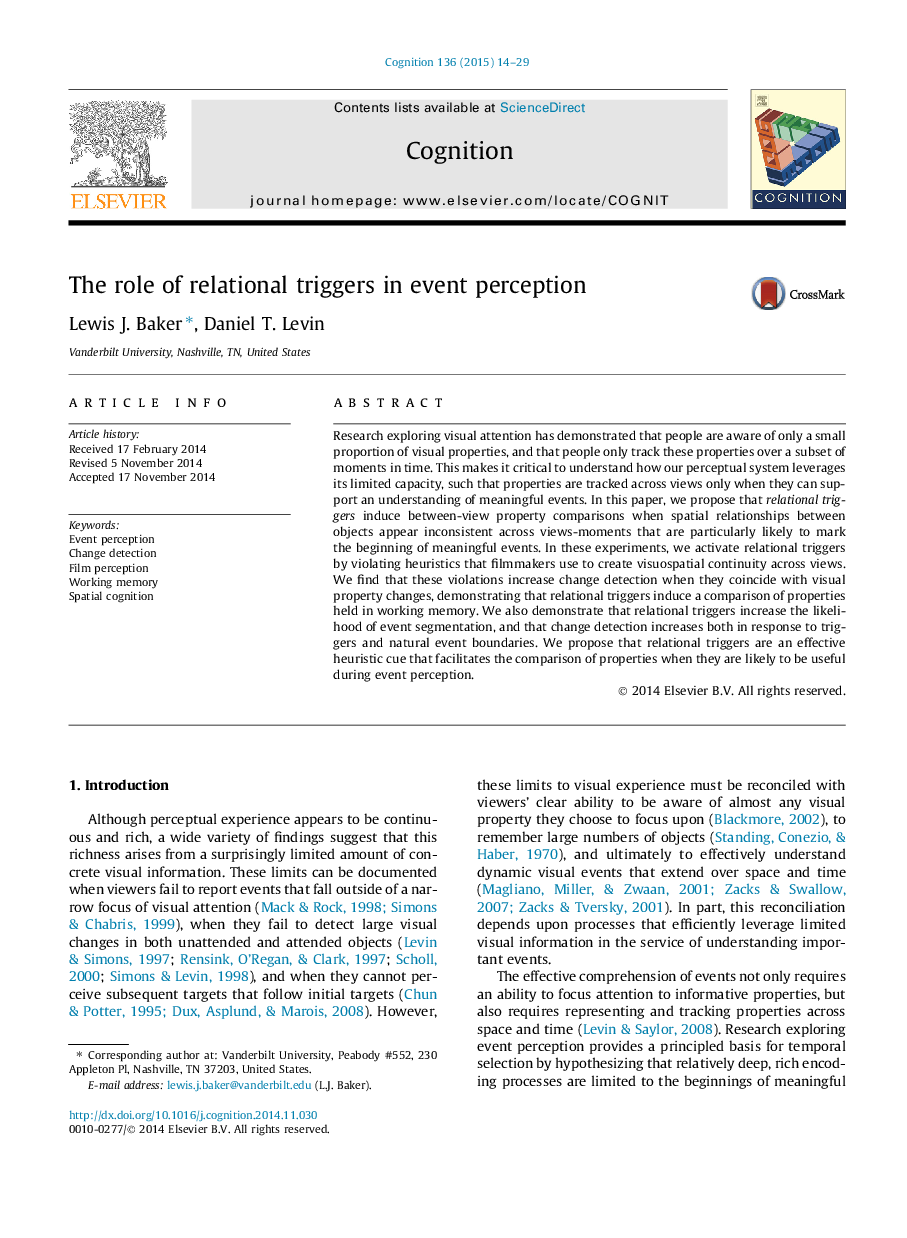| Article ID | Journal | Published Year | Pages | File Type |
|---|---|---|---|---|
| 7287291 | Cognition | 2015 | 16 Pages |
Abstract
Research exploring visual attention has demonstrated that people are aware of only a small proportion of visual properties, and that people only track these properties over a subset of moments in time. This makes it critical to understand how our perceptual system leverages its limited capacity, such that properties are tracked across views only when they can support an understanding of meaningful events. In this paper, we propose that relational triggers induce between-view property comparisons when spatial relationships between objects appear inconsistent across views-moments that are particularly likely to mark the beginning of meaningful events. In these experiments, we activate relational triggers by violating heuristics that filmmakers use to create visuospatial continuity across views. We find that these violations increase change detection when they coincide with visual property changes, demonstrating that relational triggers induce a comparison of properties held in working memory. We also demonstrate that relational triggers increase the likelihood of event segmentation, and that change detection increases both in response to triggers and natural event boundaries. We propose that relational triggers are an effective heuristic cue that facilitates the comparison of properties when they are likely to be useful during event perception.
Related Topics
Life Sciences
Neuroscience
Cognitive Neuroscience
Authors
Lewis J. Baker, Daniel T. Levin,
